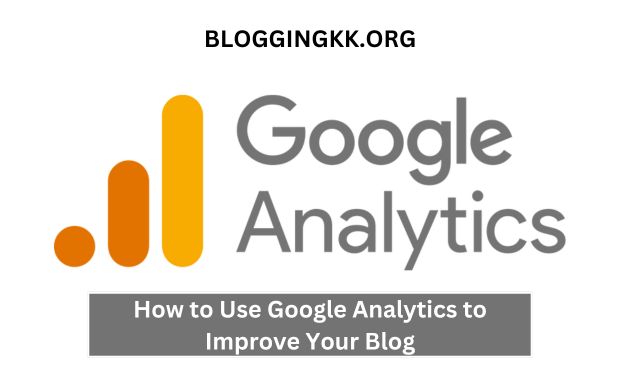In the digital era, having a blog is not just about writing and publishing; it’s about continuously improving your content to engage readers and achieve your goals. Google Analytics remains one of the most powerful tools for bloggers, providing actionable insights into your audience’s behavior. In 2025, with updates in user privacy regulations and advancements in analytics tools, leveraging Google Analytics effectively requires both strategic thinking and technical know-how. This guide will help you optimize your blog using Google Analytics, balancing technical precision with engaging content creation.

Why Use Google Analytics for Your Blog?
Google Analytics enables you to:
- Understand Your Audience
- Learn about your readers’ demographics, interests, and locations.
- Track User Behavior
- Identify what content resonates and keeps readers engaged.
- Improve Content Strategy
- Pinpoint your top-performing posts and replicate their success.
- Boost Conversions
- Understand and optimize your call-to-actions (CTAs).
- Measure ROI
- Analyze traffic sources to focus your marketing efforts effectively.
Setting Up Google Analytics in 2025
- Switch to Google Analytics 4 (GA4): GA4 is the default version in 2025, offering enhanced features like:
- Event-based tracking instead of session-based.
- Enhanced machine learning predictions.
- Simplified cross-platform tracking.
- Install the Tracking Code:
- Use Google Tag Manager for efficient implementation.
- Verify the setup using the “DebugView” feature in GA4.
- Define Your Goals:
- Example goals include newsletter sign-ups, social media shares, and time spent on pages.
Key Metrics to Monitor
| Metric | Definition | Why It Matters |
|---|---|---|
| Pageviews | Number of times a page is viewed | Indicates popular posts or pages. |
| Average Session Duration | Time users spend per session | Measures engagement levels. |
| Bounce Rate | Percentage of users leaving after viewing one page | High rates indicate content or UX issues. |
| Conversion Rate | Percentage of goal completions | Tracks the effectiveness of CTAs and strategies. |
| Traffic Sources | Channels driving traffic (e.g., search, social) | Helps refine your promotion strategies. |
Optimizing Your Blog with Google Analytics
1. Understand Audience Behavior
a. Demographics Report:
- Access: Audience > Demographics.
- Use data to tailor content for age groups, gender, and interests.
b. Engagement Metrics:
- Evaluate “Average Engagement Time” and “Engaged Sessions” to identify engaging content types.
Pro Tip: Segment your audience based on behavior (e.g., frequent visitors vs. new readers) and personalize your content accordingly. How to Fix Common Google Search Console Errors.
2. Identify High-Performing Content
a. Landing Page Report:
- Access: Engagement > Pages and Screens.
- Analyze top pages by views, average session time, and conversions.
b. Content Grouping:
- Group similar types of content (e.g., tutorials, reviews) to evaluate performance by category.
Actionable Insight: If your “how-to” posts outperform others, consider expanding that category.
3. Enhance User Experience (UX)
a. Behavior Flow Report:
- Visualize user navigation paths.
- Identify drop-off points and improve internal linking.
b. Site Speed Report:
- Access: Reports > Tech > Site Speed.
- Optimize loading times for slow-performing pages.
Example Improvement: Compress images and leverage caching tools to reduce page load times.
4. Refine Traffic Strategies
a. Traffic Source Analysis:
- Access: Acquisition > Traffic Acquisition.
- Compare performance across sources like organic search, social media, and referrals.
b. Campaign Tracking:
- Use UTM parameters for tracking promotional campaigns.
Example: If organic traffic is low, focus on SEO optimization strategies like keyword research and backlink building. A Beginner’s Guide to Google Search Console Features.
Using GA4 Advanced Features
1. Leverage Predictive Metrics
GA4’s machine learning predicts:
- Purchase Probability.
- Churn Probability.
- Revenue Forecasting.
Use these predictions to:
- Retarget users at risk of churn.
- Optimize offers for high-value segments.
2. Custom Dashboards
Create dashboards to:
- Monitor specific metrics (e.g., blog engagement metrics).
- Share insights with collaborators.
Example Insights and Actions
| Insight | Action |
| High bounce rate on mobile devices | Optimize mobile UX (e.g., responsive design). |
| Low engagement on certain blog topics | Survey readers to understand preferences. |
| Most traffic from social media | Double down on social sharing strategies. |
| High engagement on video-based posts | Integrate more videos into your content strategy. |
Case Study: Transforming a Blog Using Google Analytics
Scenario: A travel blogger noticed a decline in organic traffic. Setting Up Google Search Console: Step-by-Step Guide.
Steps Taken:
- Analyzed Traffic Sources:
- Organic traffic was declining, while direct traffic remained steady.
- Checked Keywords Performance:
- Discovered outdated blog posts ranking for irrelevant keywords.
- Action Plan:
- Updated old posts with fresh, targeted keywords.
- Improved on-page SEO by adding alt tags and meta descriptions.
Results: Traffic increased by 35% within three months.
Balancing Analytics with Creativity
While Google Analytics provides critical data, balance it with creative strategies:
- Write Engaging Headlines:
- Use analytics to find what resonates, but prioritize originality.
- Incorporate Visuals:
- Analyze “time on page” to identify posts that could benefit from infographics or videos.
- Experiment with Formats:
- Use A/B testing to determine the best content formats (e.g., listicles vs. in-depth guides).
Conclusion
Google Analytics in 2025 is more powerful than ever, offering features to elevate your blog’s performance. By understanding your audience, refining your content strategy, and leveraging advanced analytics, you can create a blog that ranks high on search engines and captivates your readers. Embrace data-driven decisions, but don’t lose sight of the creativity that makes your blog unique. Start analyzing, experimenting, and improving your blog today! Make Money with Google AdSense.